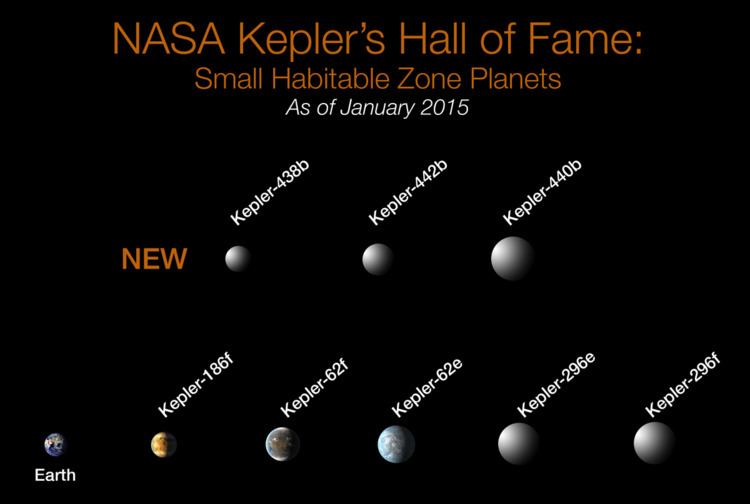 | ||
This is a list of potentially habitable exoplanets and possible exoplanets. The list is based on estimates of habitability by the Habitable Exoplanets Catalog (HEC), and data from the NASA Exoplanet Archive. The HEC is maintained by the Planetary Habitability Laboratory at the University of Puerto Rico at Arecibo.
Contents
- Potential habitable zone status
- List of exoplanets in the conservative habitable zone
- List of exoplanets in the optimistic habitable zone
- Previous candidates
- References
Planet habitability involves orbiting at the right distance from the host star for liquid surface water to be present, various geophysical and geodynamical aspects, radiation type and intensity, and the host star's plasma environment.
Potential habitable zone status
In astronomy and astrobiology, the circumstellar habitable zone (CHZ or sometimes "ecosphere", "liquid-water belt", "HZ", "life zone" or "Goldilocks zone") is the region around a star where a planet with sufficient atmospheric pressure can maintain liquid water on its surface.
A potentially habitable planet implies a terrestrial planet within the circumstellar habitable zone and with conditions roughly comparable to those of Earth (i.e. an Earth analog) and thus potentially favourable to Earth-like life. However, the question of what makes a planet habitable is much more complex than having a planet located at the right distance from its host star so that water can be liquid on its surface: various geophysical and geodynamical aspects, the radiation, and the host stars plasma environment can influence the evolution of planets and life, if it originated.
In November 2013, astronomers reported, based on Kepler space mission data, that there could be as many as 40 billion Earth-sized planets orbiting in the habitable zones of Sun-like stars and red dwarfs in the Milky Way, 11 billion of which may be orbiting Sun-like stars.
A 2015 review concluded that the exoplanets Kepler-62f, Kepler-186f and Kepler-442b were likely the best candidates for being potentially habitable. These are at a distance of 1,200, 490 and 1,120 light-years away, respectively. Of these, Kepler-186f is similar in size to Earth with a 1.2-Earth-radius measure and it is located towards the outer edge of the habitable zone around its red dwarf.
List of exoplanets in the conservative habitable zone
This is a list of the exoplanets that are more likely to have a rocky composition (which according to current research requires a radius of less than 1.6 R⊕ and a mass less than 6 M⊕) and maintain surface liquid water (i.e. between 0.5 and 1.5 R⊕ and between 0.1 and 5 M⊕, and orbiting within the conservative habitable zone). Note that this does not ensure habitability, and that * represents an unconfirmed planet or planet candidate. Earth is included for comparison.
List of exoplanets in the optimistic habitable zone
This is a list of the exoplanets that are less likely to have a rocky composition or maintain surface liquid water (i.e. 0.5 < planet's radius ≤ 1.5 Earth radii or 0.1 < planet's minimum mass ≤ 10 Earth masses, or the planet is orbiting within the optimistic habitable zone). Note that this does not ensure habitability, and that * represents an unconfirmed planet or planet candidate.
Previous candidates
HD 85512 b was initially found to be potentially habitable, but updated models for the boundaries of the habitable zone placed the planet interior to the HZ, and it is now considered non-habitable. Kepler-69c has gone through a similar process; though initially believed to be potentially habitable, it was quickly realized that the planet is more likely to be similar to Venus, and is thus no longer considered habitable.
Similarly, Tau Ceti f was initially considered potentially habitable, but the improved model of the circumstellar habitable zone places the planet exterior to the outer limits of habitability, so it is now considered non-habitable.
KOI-1686.01 was also considered even the single-most potentially habitable exoplanet after its detection in 2011, until it was proved a false positive by NASA in 2015.
